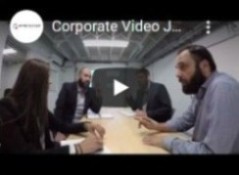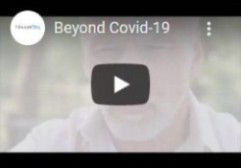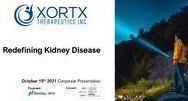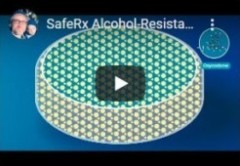
© CEOCFO Magazine -
CEOCFO Magazine, PO Box 340
Palm Harbor, FL 34682-
Phone: 727-
Email: info@ceocfocontact.com


Search





Business Services | Solutions
Medical | Biotech
Cannabis | Hemp
Banking | FinTech | Capital
Government Services
Public Companies
Industrial | Resources
Clean Tech
Global | Canadian
Lynn Fosse, Senior Editor
Steve Alexander, Associate Editor
Bud Wayne, Marketing
& Production Manager
Christy Rivers -



“We believe trust in the digital age is built by being able to see the transparent, aggregate feedback of your fellow consumers. Credder is simply extending this online review methodology to an industry experiencing record levels of distrust today-
Chase Palmieri
Credder Inc. Launches Content Credibility Data License To Restore Consumer, Subscriber, And Advertiser Trust In The News Industry
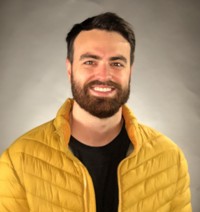
Chase Palmieri
CEO/Co-
Credder Inc.
Interview conducted by:
Lynn Fosse, Senior Editor
CEOCFO Magazine
Published – February 21, 2022
About Credder Inc.
Credder is the world’s leading news and content review platform, often referred to as the “Rotten Tomatoes for news.” Credder’s technology enables and aggregates crowdsourced reviews from verified journalists (Critic Score) and the general public (Public Score) into overall credibility scores for each article, author, and news website. With record distrust in online media, Credder’s tens of thousands of crowdsourced reviews provide content scores to help readers quickly find the most trusted information on any topic, and our data licensing customers to more rapidly gain subscribers and brand safety advertisers.
CEOCFO: Mr. Palmieri, what is the idea behind Credder Inc.?
Mr. Palmieri: We started Credder Inc. in 2018 to give all news consumers a powerful voice and all publishers a way to listen, respond, and continually improve. That builds trust because this happens in a transparent environment with no censorship. Today, Credder is the world's leading content review platform-
CEOCFO: What does someone find when they are using your platform?
Mr. Palmieri: By going to credder.com or downloading Credder’s free Chrome browser extension, you’ll be able to see reviews from journalists and your fellow news consumers on each article, author, and news website. These crowdsourced scores help you quickly find the most trusted information on any topic and help you avoid time-
CEOCFO: Does Credder decide what is credible or trustworthy news?
Mr. Palmieri: No, Credder does not rate the quality or credibility of any piece of content or source. Credder simply builds free content review tools that make it easy for online readers to rate the content and news articles they’re already reading online. You can think of us as the “Rotten Tomatoes for news” because we show you what critics and the general public think about each article, author, and news website.
We believe trust in the digital age is built by being able to see the transparent, aggregate feedback of your fellow consumers. Credder is simply extending this online review methodology to an industry experiencing record levels of distrust today-
CEOCFO: Why do you believe people looking to click on an article will take the time to go to Credder?
Mr. Palmieri: We don't! We expect to have to meet news consumers where they are, which is why Credder’s browser extension is such a great product and why we are partnering with other major platforms like social media and news aggregators to display Credder scores where people are already gathering news today.
CEOCFO: What was involved in pulling this together? Where were some of the challenges, and maybe something that turned out to be easier than you expected?
Mr. Palmieri: At first, we were really just trying to build an easy way for any reader to review any online article. The first challenge came when we decided that each article review should bubble up into an aggregate score for the article’s author and outlet. That required a lot of technology under the hood. Much more than we initially realized.
Today, the real challenge is transitioning from a product development company to a sales and marketing machine, now that we are the first-
CEOCFO: How are you doing that?
Mr. Palmieri: I have taken over our direct sales efforts and luckily my work hosting the Credder Podcast, where I have deep dive conversations with industry leaders working at the intersection of media and tech, has given me amazing access to all the key decision makers in our space. The Credder Podcast has proven an effective way to ask questions that help us better understand our customers’ problems while building that direct relationship.
CEOCFO: What segments that you are looking at seem to be most interested? Have you found certain areas that seem to pay more attention, or understand more easily what you are trying to accomplish and are willing to sign on or at least take a look at what you are doing?
Mr. Palmieri: Our first customers have been social media platforms and news aggregators, who seem excited to offer more context to the news readers using their products. This has been great for us because these same customers will be featuring Credder scores next to every piece of content within their own products, bringing a ton of brand awareness to the work we’re doing.
CEOCFO: How do you implement some of the interactions with third parties? What is involved in an implementation? How easy, how difficult, what do you need to do, what do they need to do?
Mr. Palmieri: Once I’m sure that a potential partner is serious about integrating our Enterprise Data License API, the next step is usually for their CEO and CTO to hop on a call with me and my CTO/Cofounder Austin Walter. This is when Austin has a chance to explain to their technical lead just how quick, easy, and painless it is to access Credder’s database. Once we’ve put their team at ease and understand how they intend to use Credder’s data within their own product, we send over the Annual License Agreement, Quickstart Tutorial, API Documentation, and Brand Guidelines explaining exactly how Credder scores should look if displayed publicly to their users. After that, it should take them no more than 2 hours to integrate with Credder’s API, during which time they have full access to our development team for support.
CEOCFO: Would you tell us about the reviewers? Who is doing the reviewing and how do people look at their credibility, or is it more that a reviewer will develop a following?
Mr. Palmieri: We hope to someday help news critics on Credder become celebrities like Ebert and Roeper were for movies. But today, most of our reviewers are engaging with the platform out of a sense of frustration with the rapidly declining quality of online journalism. We know we can’t rely on the good will of frustrated news consumers forever, but you’d be surprised how many people are ready to start holding media accountable. Today, our platform focuses on English written content, so we are not doing other types of content like podcasts and cable news yet.
CEOCFO: Do you see a point, or maybe we are at that already, where the public in general will demand something like Credder?
Mr. Palmieri: I think we’re getting closer and closer with each new piece of clickbait that’s clearly resulting in reader distrust and frustration. When we first started working on Credder, the problem of so-
CEOCFO: Development and commercialization are always expensive. Are you seeking funding, partnership or investment of any type?
Mr. Palmieri: The truth is that any startup tackling a problem as big ours is always looking for more resources. We are about to close our Pre-
CEOCFO: What surprised you from idea to launch to usage today?
Mr. Palmieri: The thing that has surprised me most, and this is disappointing, is the way news consumers and platforms have been so willing to accept top-
CEOCFO: Why is Credder important?
Mr. Palmieri: Whatever issue you care about most in the world, whether it be climate change, political corruption, or world peace, every other issue becomes easier for society to tackle if we can first fix our news ecosystem to ensure that news producers are working on behalf of news consumers.
CodeHunter – the Automated Cybersecurity Solution Identifying Behavioral Anomalies to Uncover Zero-
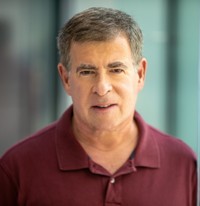
Larry Roshfeld
CEO
CodeHunter
Interview conducted by:
Lynn Fosse, Senior Editor
CEOCFO Magazine
Published – February 21, 2022
CEOCFO: Mr. Roshfeld, the first thing on the Codehunter site is “Tomorrow’s cyber security today.” What does that mean for CodeHunter?
Mr. Roshfeld: The cybersecurity industry has been around for about 40 years now, and the challenge is the evolution of the bad guys is occurring faster than the evolution of the good guys in terms of the technology. It used to be that a larger organization such as a bank or energy company had to protect themselves from some kid who was trying to attack them from the safety of their mother’s basement. Now what you are seeing is attacks by other nation-
A lot of the technology that exists today is really intended to solve a different problem with people trying to repurpose it or use it in a way that it was really not intended for. That is really what we mean when we say “Tomorrow’s cybersecurity today.” We have taken a couple of steps ahead of where things are in the industry as a whole because the bad guys have taken a couple of steps ahead of where the industry is as a whole.
CEOCFO: What do you understand that allows you to come up with a solution that is ahead of its time?
Mr. Roshfeld: One of the major changes in the cybersecurity industry has been that the malicious software now has the capability of evolving on its own. It is very similar to a virus out in the wild, similar to what is going on with COVID19 today. If you design cybersecurity technology to detect a very specific file, and that file is constantly changing, you will not be able to detect it because it is constantly changing. We have developed a way of identifying potentially malicious or dangerous software by the behaviors it contains, not by any kind of signature or fingerprint, because at the end of the day you have to worry about what that software is going to do within your environment. What we are looking for is not necessarily a very specific file, but we are looking for the anomalous behaviors that would cause problems within an organization.
CEOCFO: What might you be able to detect as you have a better method than others?
Mr. Roshfeld: That is an excellent question because the fear of every organization is what is called a zero-
The reality is: it is not just the first organization to get hit, it is the first weeks’ worth of organizations. We can detect these new types of attacks. Rather than waiting for someone else to get hit first and learn from them, we can protect not only the very first person but the first few weeks’ worth. It typically takes the industry entire weeks to be able to identify and distribute defenses against any new type of attack. Because we are looking for the behavior and not the specific file, we can detect these kinds of zero day threats that nobody else in the industry can detect today.
CEOCFO: What is an example of the behavior you might see that would lead you to be suspicious?
Mr. Roshfeld: Let us use the example of something called ransomware, which comes onto your computer, opens files, encrypts them and saves them back to disk. We can see that a piece of software might look innocent and have the name of a calculator on it or might actually be a calculator, but it may be that it gets triggered on a specific day or occurrence. When that happens, suddenly this behavior of opening files, running an encryption algorithm and then saving them again to disk would occur.
We would be able to look at that and say wait a second, this is a calculator, there is no reason a calculator should ever be encrypting a file let alone encrypting your whole hard drive. We would be able to see that part of this file is an innocent calculator and will do calculation but there are also some behaviors that are embedded in the software that would cause it to do damage if it were to run on a specific day, or even were to generate a specific result.
CEOCFO: What is involved with implementation and how do you work with or around other security software that a company might have?
Mr. Roshfeld: One of the things CodeHunter can demonstrate to our customers is whether they made good investments in their existing technology. Having something that looks at email attachments for known viruses is a good thing to have. Having firewalls to protect you against other things are good things to have, but we pick up where other technologies end. It is not that we replace their investment, we supplement it to make it even stronger. For example, let’s say you have a firewall in place today that quarantines executable files when they come in. That doesn’t mean you have technology that can identify potentially malicious behaviors within those files that you have quarantined. You are going to quarantine a file, see if it is a known virus, and if it is, you will not let it through and if it is not, you’ll let it through.
Unfortunately, in many cases the fact that it is not a known virus does not mean it’s safe. What we would do in that case is scan through their quarantined files constantly, look for anomalous behaviors and then notify them that these particular files have potentially dangerous behaviors and recommend they investigate it. We can do that for a quarantine directory, we can do it for existing files. For example, it is not unusual for a large corporation to have thousands if not tens of thousands of custom-
We find when we go in and scan these network directories, often they are these innocent looking files that either might have malicious software embedded in them just waiting to be triggered or may have something that creates a vulnerability but was not intended to be malicious. For example, someone accidentally left open a back door on a piece of software for testing purposes and then forgot to close it. What we can do that other folks cannot do is we can not only look at a file to see if it is a known piece of malware but we can look at a single file or entire directories to search for potentially problematic behaviors.
CEOCFO: How do you get companies to understand the need to get to another level?
Mr. Roshfeld: Sadly, sometimes it takes someone else being harmed for people to realize there is a problem. For instance, look at industries such as financial services or healthcare. For many years, in healthcare, the bad guys ignored the hospitals and healthcare providers. In a sense, they were kind of good Samaritan bad guys going after the banks and insurance companies but not the hospitals. Unfortunately, we are seeing a rise in people going after hospitals and crippling their systems or holding patient information hostage. For many years, you might have been the chief information security officer at a hospital and said, “Okay, you just have to be careful,” and those viruses coming in through email just need to have “some basic protection.”
Now, when an entire hospital system is shut down because of an attack or even worse, patients are harmed because the physicians could not access their records and did not know what would have been critical to their treatment. Instead of feeling like they have it under control, they are starting to recognize that they are in as much danger as any bank or insurance company.
It takes someone else getting hurt for organizations to wake up because typically what will happen is the CEO or CFO has been told for years that they have invested in cybersecurity and have this under control. They read an article in the newspaper and start to worry, forwarding it to their tech team asking if it could hit them. And the answer to that question in many cases is yes.
That tends to be the impetus for people. It’s not a theoretical or philosophical risk, but a very practical one where they see someone else is harmed, that they really do not have a protection against that same danger, and that they need to do something and it needs to be done fairly quickly.
CEOCFO: How do you reach out to potential customers and who would be your target audience?
Mr. Roshfeld: We recognize our product resonates first with large companies. It is not going to start with the local manufacturer who has five employees because the relative risk is fairly small versus the cost for our product. There has to be enough of a risk for people to feel like, “yeah, if we got shut down, we would lose a tremendous amount of money.”
Typically, what we focus on initially is large-
CEOCFO: What have you learned from past experience that is helpful at CodeHunter?
Mr. Roshfeld: It is interesting because I do a lot of mentoring of young entrepreneurs and I try to help them understand some basic philosophies. What I find often helps is to put it in the context of a famous quote or other well-
Even someone like me who is fairly old, I guess I prefer the word experienced, I have seen a lot of this through multiple waves. Sometimes things are in fact different, so you need to validate your assumptions and get out there and talk to people. I can pat myself on the back all day long and say I know this or that, but you really need to get out there and validate it because sometimes things change. In the same light, I remind people that one of the classic mistakes organizations make, small and large, is convincing themselves that this time is going to be different. We have seen this in the stock market many times when people say the stock market is only going to go up and this time it is going to be different. The stock market goes up and then it comes down again. It is the same thing with startups. Sometimes your pricing can be right, sometimes your pricing can be wrong. Just because you think you have built a better mousetrap, does not mean you necessarily have.
The second thing I think is very fundamental to any startup business is at the end of the day, your assets go home at night. We are not a manufacturing company with a shop floor that can produce a certain number of widgets on a regular basis. My employees tend to be more individualistic and the challenge with that is you are building a team made up of individuals that are also at a certain degree and very confident in their abilities. You have to figure out how to make them all feel productive, effective and satisfied with their roles and that is essentially becoming even more challenging in general. It has always been a challenge but it is going to be more challenging as younger generations start looking at this and saying they are going to be more than just their job and career, so they need to find fulfillment in various ways. Sometimes folks like me forget that the people who are coming in the door now have different values, so I have to recognize that they are not all cookie cutter clones of me and that sometimes what is important to them is not what is important to me and vice versa.
CEOCFO: Are you seeking investment, partnerships or funding as you go forward?
Mr. Roshfeld: Yes. I am always open to conversations about this topic. We have great investors who I am very happy to work with, but I am always open to having conversations with others and they are open to me having conversations with others because at the end of the day, it is not just about the money, it is about what value the people are bringing in. All money is green but not all money is as valuable as other money. Just because someone can put in a million dollars does not mean that they are going to help in another way. We are always looking for investors who can add value in different ways. We are always looking for partnerships as well. As I mentioned earlier, our technology picks up where other companies leave off and is very complementary to other vendors. Eventually, there are going to be partners of ours that recognize if they combine their offering with the CodeHunter offering, they have a much stronger position in the marketplace.
While we are always looking for potential partners, as a small company, we only have so much time. The 40-
CEOCFO: What surprised you from concept to today?
Mr. Roshfeld: One of the things I have learned from the time when I first got involved in this company is that sometimes the things you think are easy are a lot harder than you think, and sometimes the things you think are hard are a lot easier than you think. We solved some technical problems very quickly in a matter of weeks that I thought were going to take us months, in one case even a year or so in terms of improving the performance of the system.
Then there are other stubborn problems that you pound away at and realize are not going to get solved in a night, a week or even a month and it is going to take a lot of investment. When you look at it that way, you recognize everything becomes a tradeoff and even when you are pleasantly surprised something takes less time, there is always something else coming along the road that is going to take more time. You have to always be prepared for those kinds of surprises because if you are not, you find yourself in a very bad position.
CEOCFO: Why is CodeHunter an important company?
Mr. Roshfeld: I think it is important for readers to understand that the world of cybersecurity is changing just as rapidly as the world of technology, and the solutions put in place over the past three years were very good in terms of solving those problems then. But new problems come along on a daily, sometimes hourly basis, and CodeHunter is well-
If companies were able to build a series of cyber walls around their organization that would guarantee safety, that would be a wonderful thing, but it’s not realistic. Organizations must constantly question whether their defenses are up to snuff against new types of attacks, be very open minded and not complacent to have a chance of staying ahead of threats.
The world of cybersecurity is changing just as rapidly as the world of technology, and the solutions put in place over the past three years were very good in terms of solving those problems then. But new problems come along on a daily, sometimes hourly basis, and CodeHunter is well-
Larry Roshfeld
